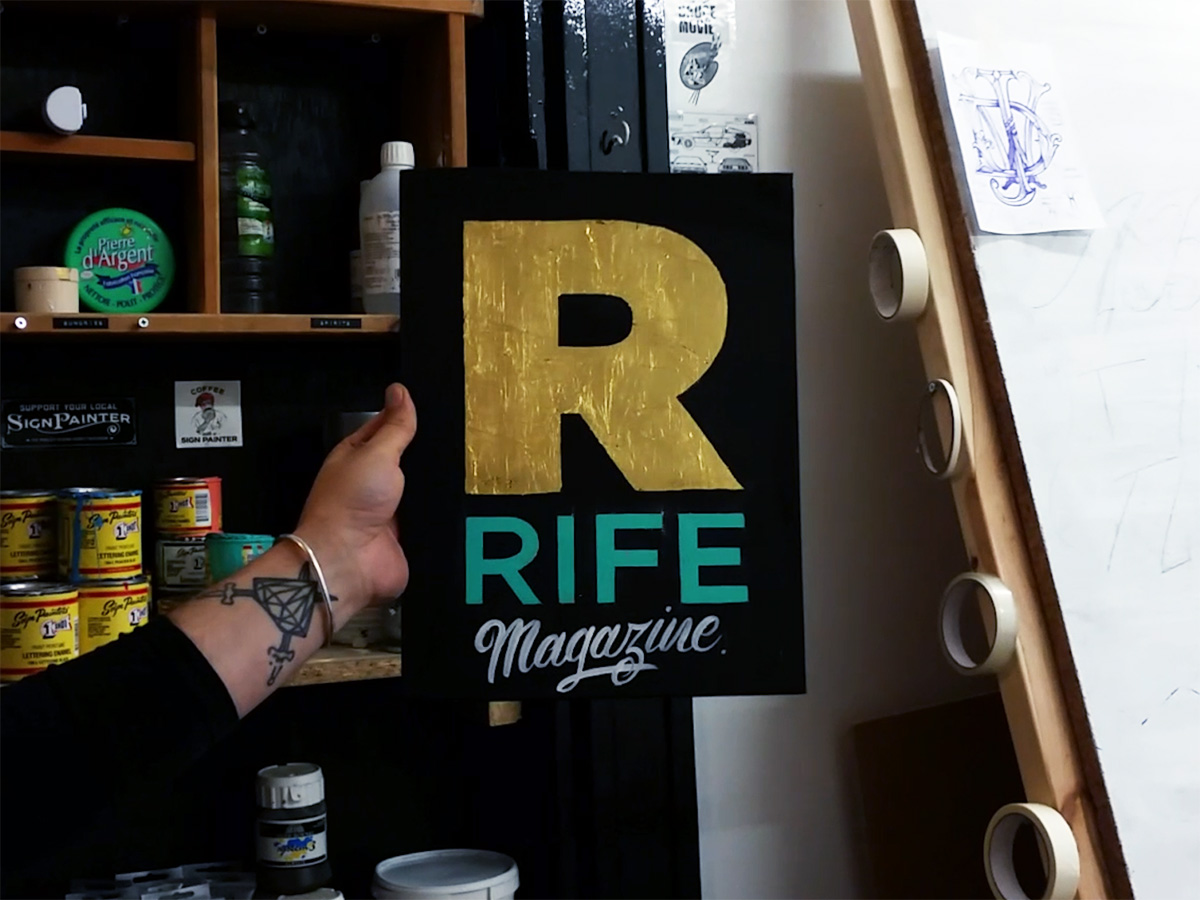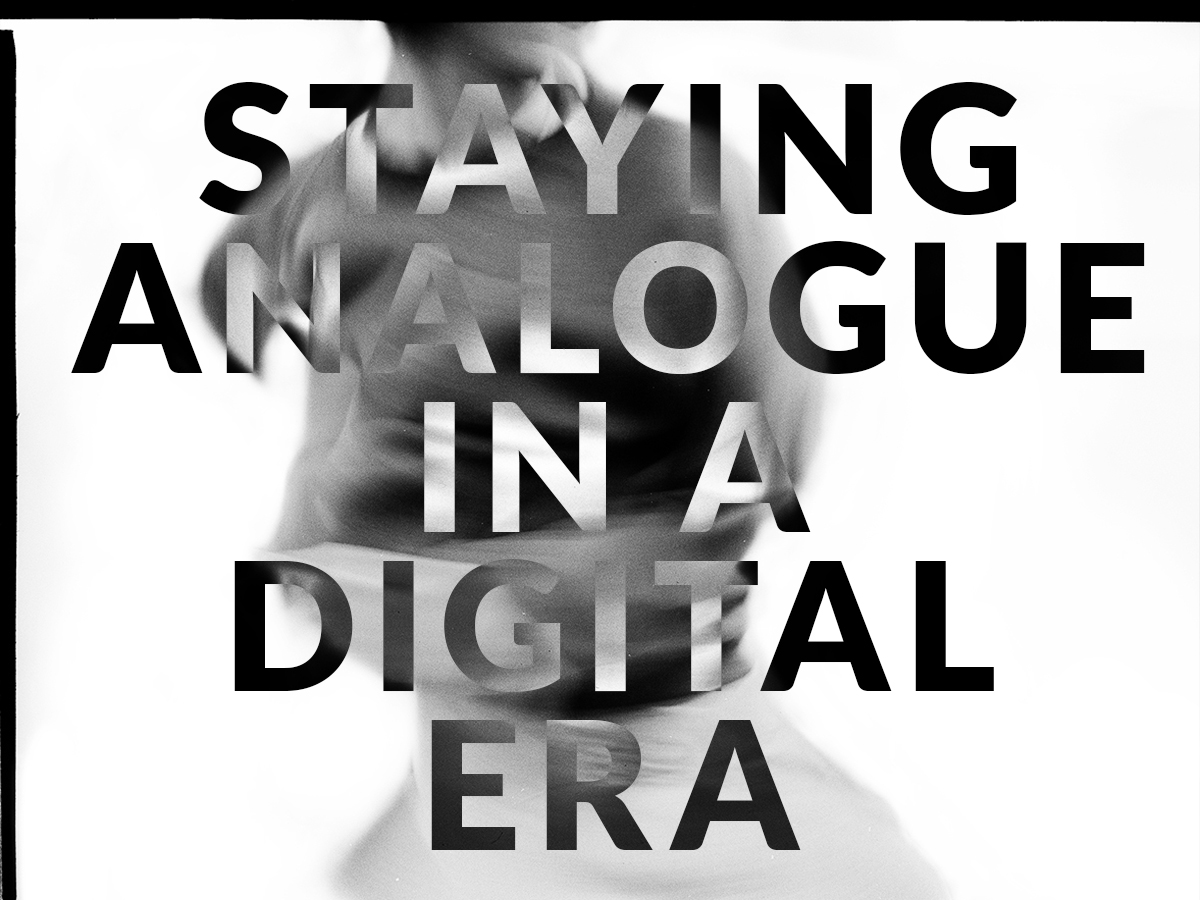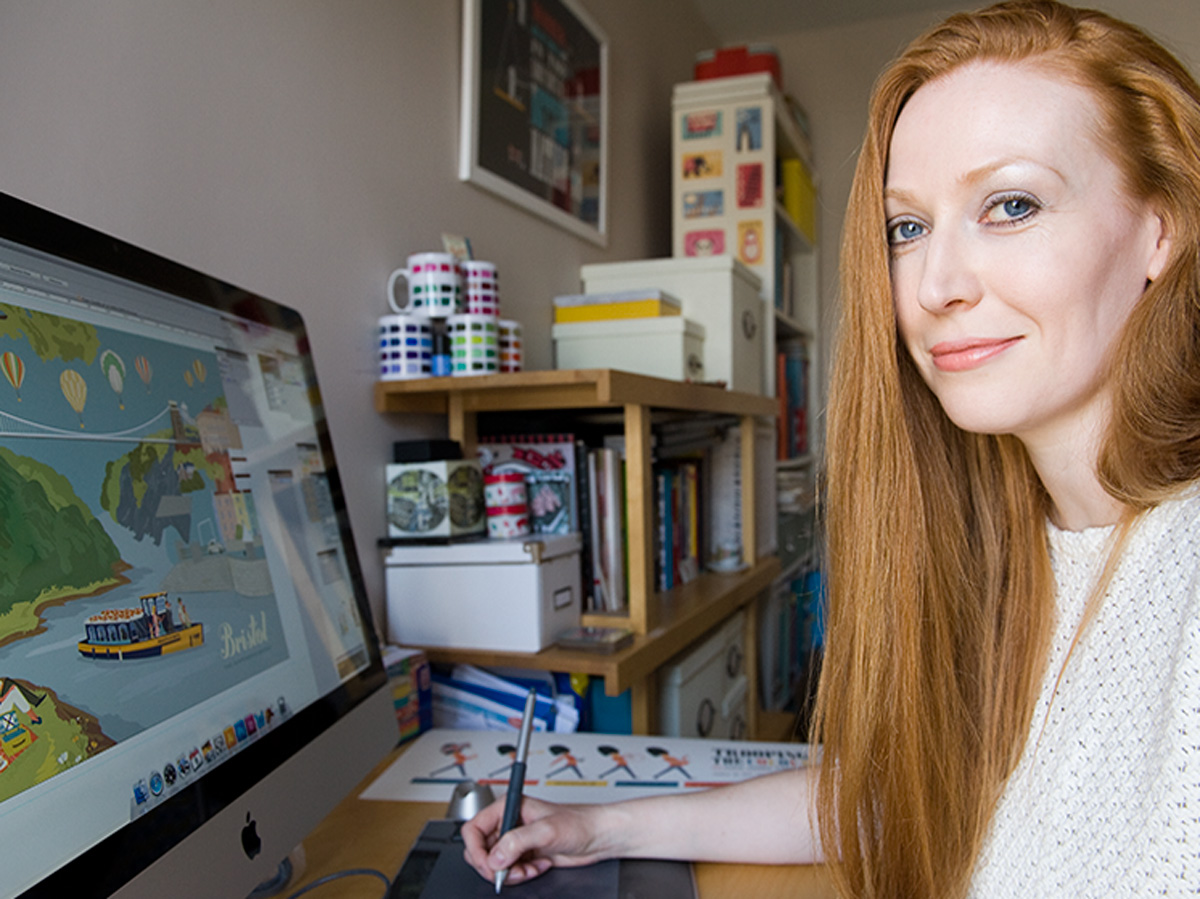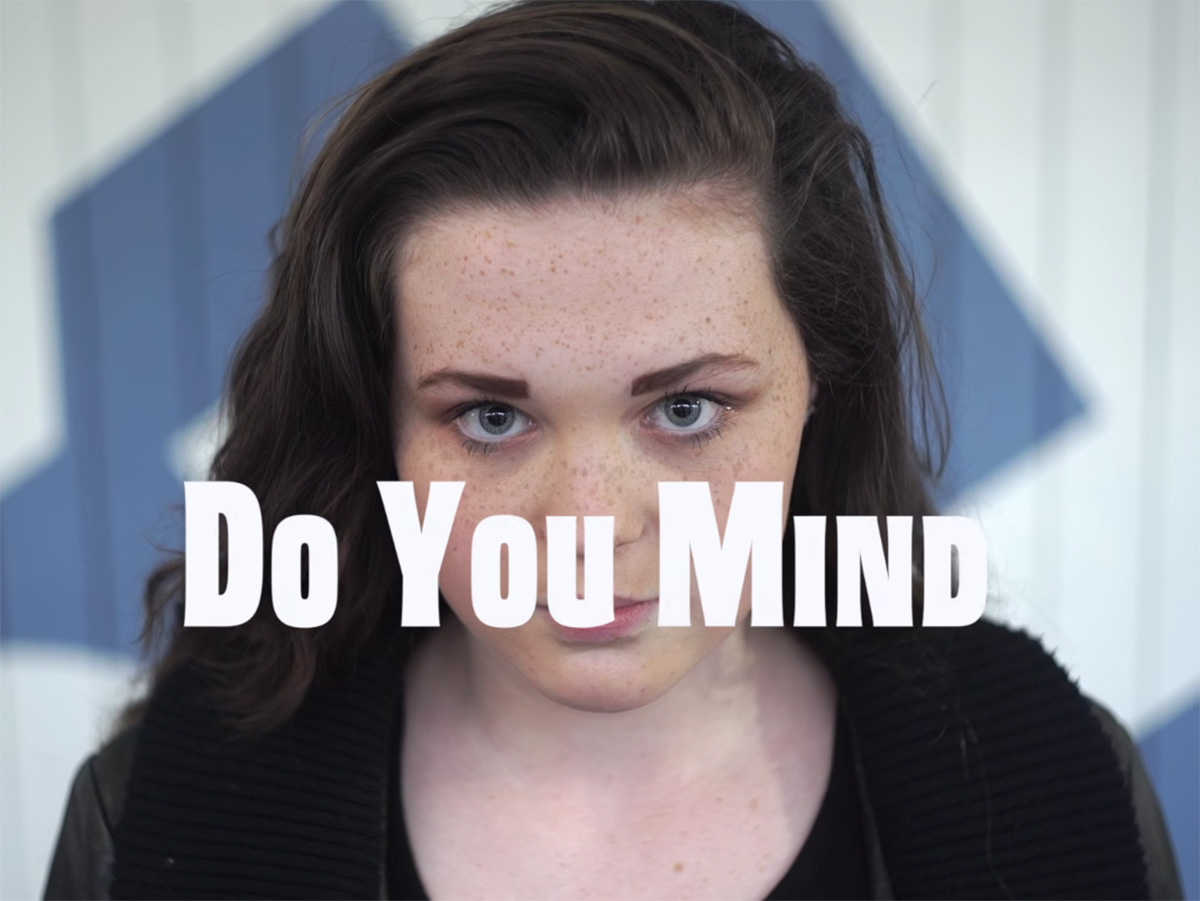Bruce Crowes And The Art Of Sign Writing
Is sign writing a dying art? Or has it been reincarnated into its own artform? Cai chatted to Bruce Crowes – a sign painter with a love for brushes, one shot paint and everything hand-painted.
Signwriting has changed a lot since it first started out.
Signwriting has changed a lot since it first started out. When you’ve got the technology at your fingertips to print signs for next to nothing, it seems like the only logical choice. I chatted to Bruce Crowes, who creates signs all painted by hand.
I walk into his workshop at The Island and I can immediately sense that it belongs to a sign writer – a scruffy table, letters on the wall, cans of paint and a massive easel. Bruce Crowes started painting signs by just picking up a brush and giving it a go. Since then, he’s painted for the Canteen, Number 1 Harbourside, the Bearritos Bus, and even painted a load of signs for Boomtown Festival this year.
We chatted for several hours about the way he works, signwriting history and how far it’s come, and he clearly knows his stuff. We worked together (with me mostly watching) on a sign for Rife that was completely painted by hand. Below, you can see how we made it along with the different steps we took.
He showed me a range of different methods to paint, but I was most fascinated by the gilding process, where he transfers 23 carat gold leaf onto a sign. He explained that there are ‘very few people left in the world who do it’, and that it’s an ‘ancient technique’. He was ‘desperate to learn it’ as it ‘gives that real air of craft when you’re working with gold’.
But here’s what he had to say…
How long have you been a signwriter?
About four or five years I think? I don’t think I was born to be one; it’s just something that I love to do. My attitude is ‘try to stop me’. I know some people that are clearly made for it and they get it – they just love the geometry and the actual construction of the letters. In reality, I’m more interested than painting a nice sign. That’s what’s more important for me – getting a nice outcome.
What would you say the hardest part of signwriting is?
Getting used to a brush. Getting used to the flow of a brush can confuse you sometimes. It can drag in places, then the paint drags and it can actually ruin your artwork. That’s really hard to get used to. It just means that if you don’t get that drag, you get those sharp edges then if you look at against the light, it looks almost like it’s vinyl. You’re essentially trying to get it as clean as possible but also as sharp as possible.
How do you get all the lines so steady and smooth?
It’s not like I just go for it. You’re thinking [a lot] about which way you’re going. Really, you should do as many downward brush strokes as possible. Sometimes you have to work sideways, but really you’re always trying to work down with anything. You don’t really go up unless you’re trying to get a sharp bottom on something.
[I try to use] as few brush strokes as possible. On a curved line or a straight line, you want to try and do it in one stroke because it’s going to give you the cleanest edge. You’re [using] the edge of the brush and that’s what gives you the flattest and cleanest point.
Do the tools help?
It’s definitely a bit about [the tools] but it’s mostly muscle memory. Because I’ve done this before, my hand recognises that it’s done this motion time and time again. It’s more about that than it is anything else.
What’s the hardest letter to paint?
I don’t like Xs. They are horrendous to paint. Although Zs seem like they’d be annoying, [they’re] actually lovely to paint because you can do loads of things with them. You can give them more style than many letters. That and Y’s too, it has such a kick, you can do so many things with it.
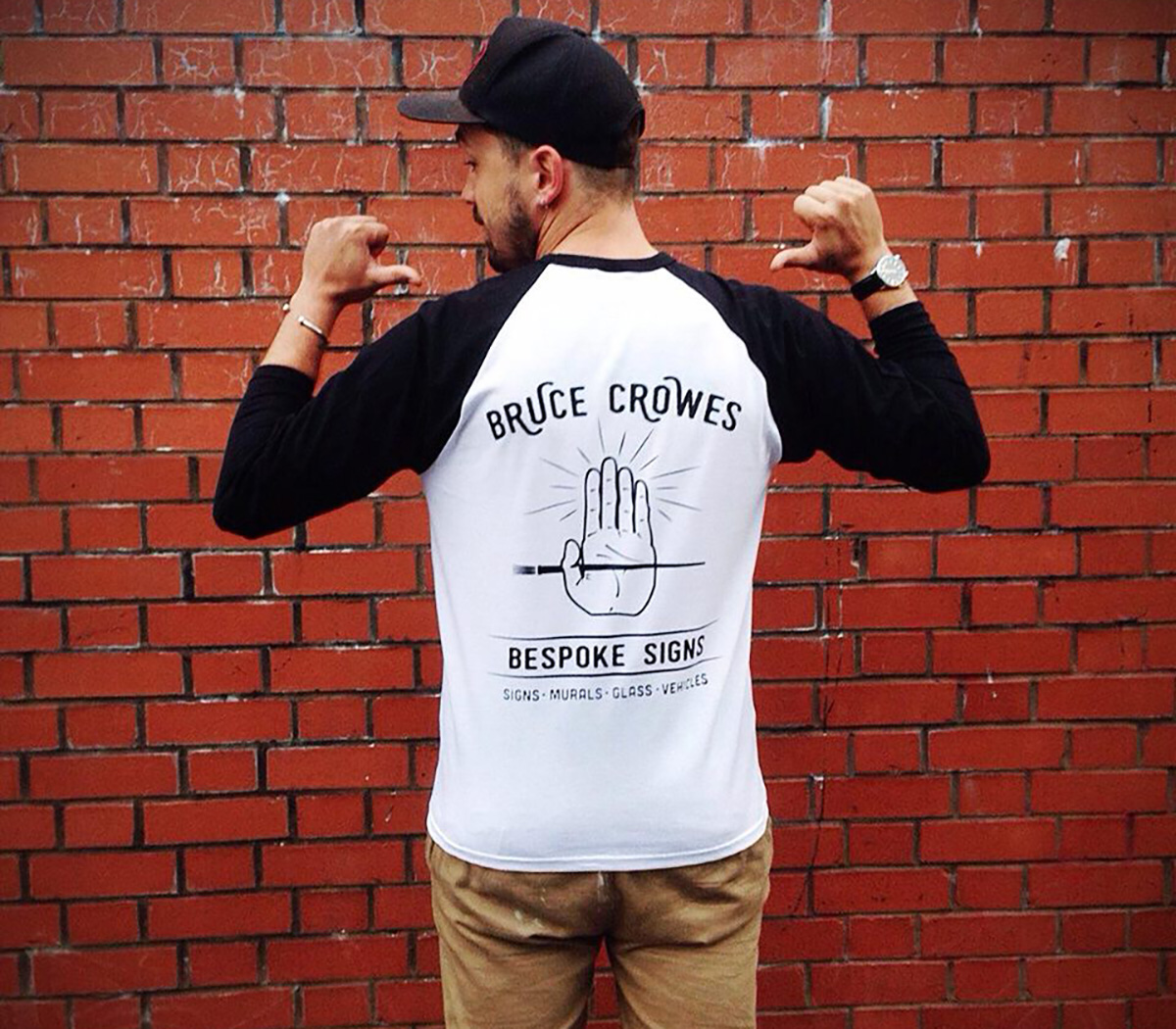
Source: Bruce Crowes Bespoke Signs
How did you start?
I went into signpainting all guns blazing just thinking i could do it, and actually I could – but it didn’t mean I was good at it. It meant that I could do it, but it’s taken a long time to get to a point where I’m confident enough around other signpainters.
Are there many other signpainters in the UK? Are there even many others in Bristol?
There must be – that I know of – at least ten signpainters in London and I know at least five or six in Bristol. There aren’t that many, but you can find them in every city in the UK. There’s a strong tradition in Britain and America where signs have always had historic relevance and they still do now. I think that comes a lot to do with our tradition as British people. I think we have a lot of those cultural traditions with craft that have been going so long that it’s inevitable that it’s going to carry on now but in a smaller way.
Why do you think sign painting is important today?
Because that’s how all signs used to be made. It feels to me that we lose enough traditions anyway in day-to-day life that we don’t need to lose another one. I just think it’s a shame when we’re a country built on craft and tradition to have that happen through computers and because things are cheaper to make. That’s all that was starting to put sign writers out of business in the 80s was the fact that plotters and computers came out. It ruined them overnight. Literally overnight, a lot of places shut down. I don’t think signpainting ever [died]. It just got reincarnated in a different way. Now it’s more of an artisan, bespoke service, whereas before, it was an everyday service.
Why do you think other people get into signwriting?
It’s a weird one these days because back 50 years ago, it would have been that your dad was a signpainter and that’s what got you into the trade. Or you would have worked around fairs where they needed signpainters on site all the time. You can understand why that would be a big thing back then. But now, that trade has found it’s way back into all these businesses, but it’s different types of people doing it now. It’s people who already have a real inclination to making artwork but they didn’t know where to go with it. That’s certainly what it was with me and when I see a lot of [illustrators] or mural artists and it’s almost a logical progression for a lot of artists to start picking up a brush and using signwriting paint.
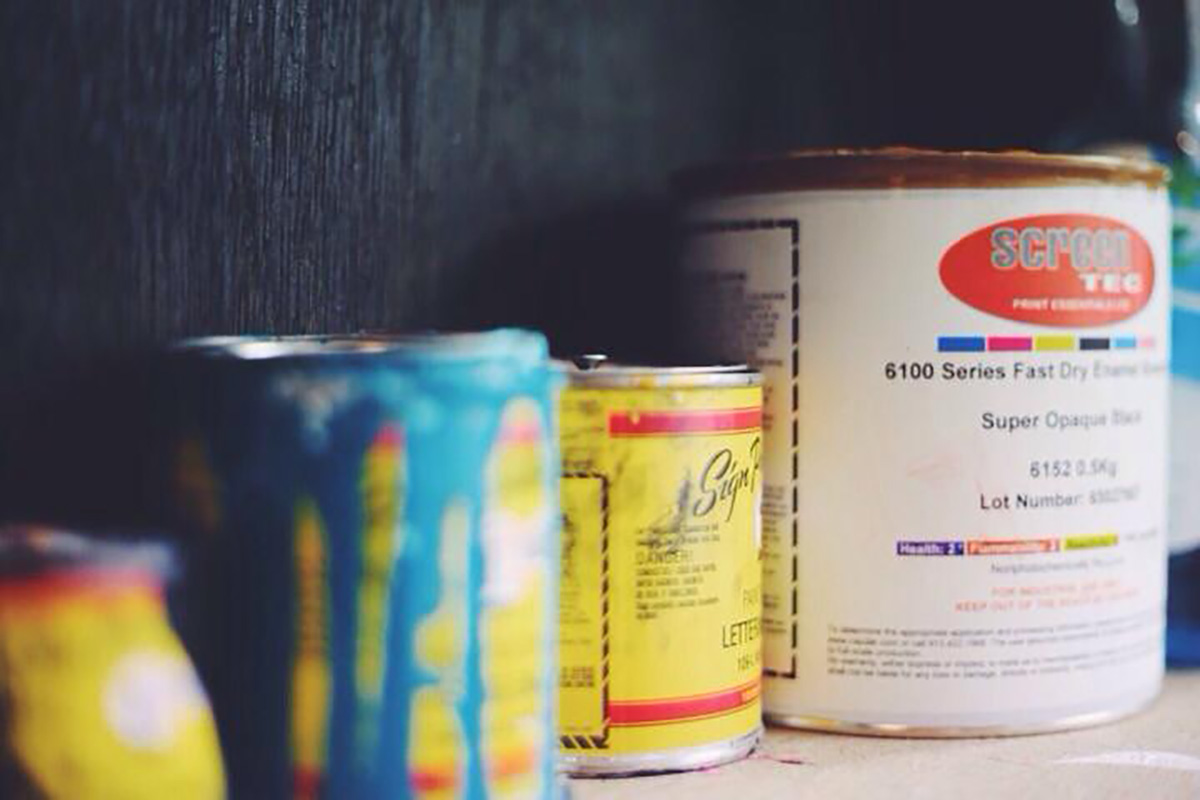
Source: Bruce Crowes Bespoke Signs
Do you think it’s progressed from just sign writing?
Yes – it doesn’t have to be traditional signs. There are a lot of artists picking up these materials and doing their own thing with it. There’s a girl called Alex May Hughes [who] does a lot of gilding of Simpsons characters using [gold]. There’s stuff you can do with signs that isn’t just traditional sign painting. There’s another guy who’s really famous because of it called Ornamental Conifer. His work isn’t traditional signs at all. It’s always lettering based, he uses one shot and works in a traditional sign way, but has a particular style.
Seems as though it’s more than just writing signs to be a sign and it’s become it’s own art form.
That’s it. Or maybe it’s found it’s own voice. I think before everyone was like and even, i think it probably ends with people like me in that when I got into it a few years ago, all the old guys I was meeting were just like make sure you keep it traditional. Make sure you do it properly. And I was always they were really adamant that that had to be done properly. That you should learn to draw your lettering properly – not just print a pattern on the computer and cut it.
What advice would you give to people starting out?
Learn the basics first before you start calling yourself a sign painter. I made that mistake, most people make that mistake and you get shown up pretty quickly when you meet the real sign painters. I still consider myself a little bit of a fool. I’ve got a workshop, five years under my belt and all these things, but I still don’t consider myself a proper sign painter. These guys have done it for a very long time and they’ve got more respect for lettering than anyone you could meet. Seek out courses too – there are courses through Better Letters. They do courses all around the world, mainly in Europe.
If you’re going to do it, you have to immerse yourself in in wholeheartedly. Give yourself over to it and recognise that actually you’re going to spend most of your life figuring it out. Some people find that scary, but I find that exciting.
Check out Bruce’s Instagram for more of his work, and in the new year he’s setting up All City Signs. He says his door is always open, so if it’s something you’re interested in then do get in touch.
What do you think? Is sign writing coming back into fashion? Did you like our sign? Let us know on @rifemag
If you want to improve your art skills, then Rife Guide has got a load of places where you can go

